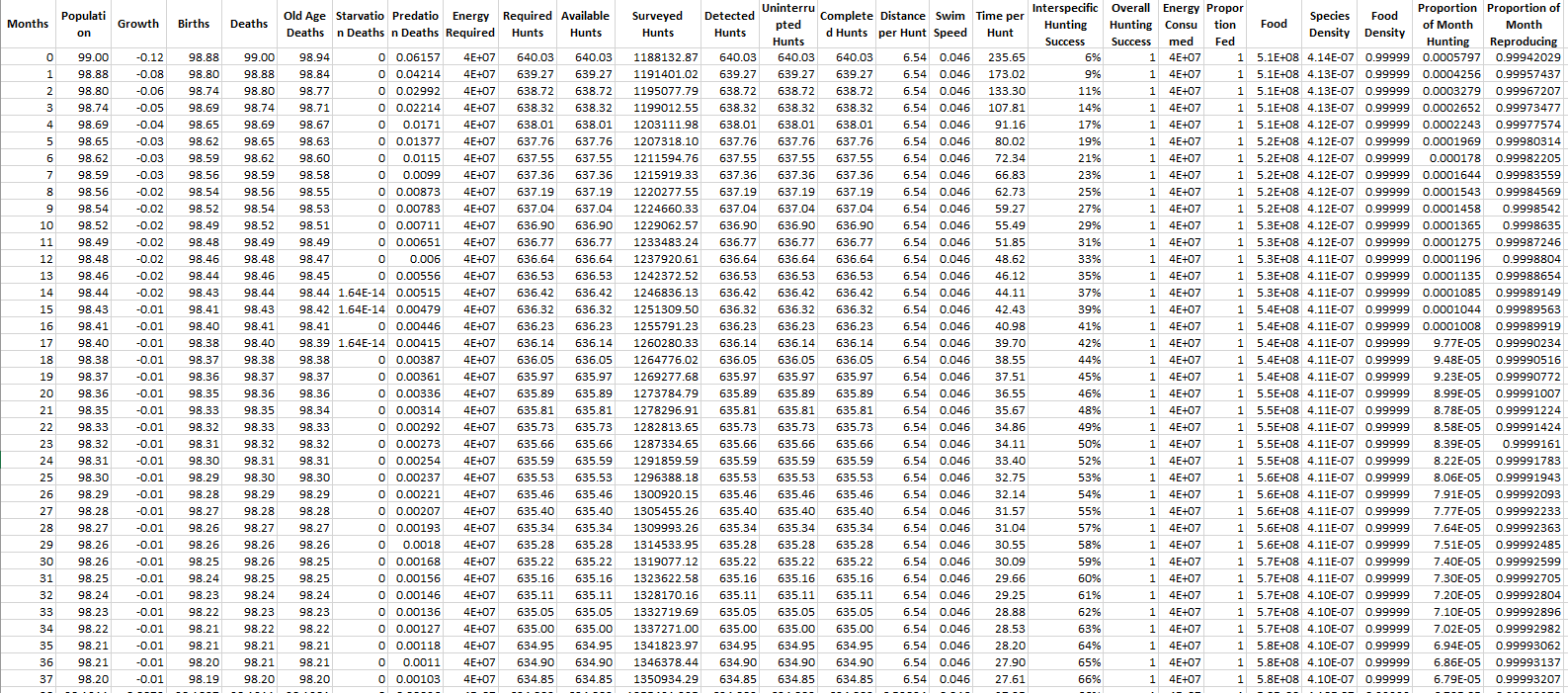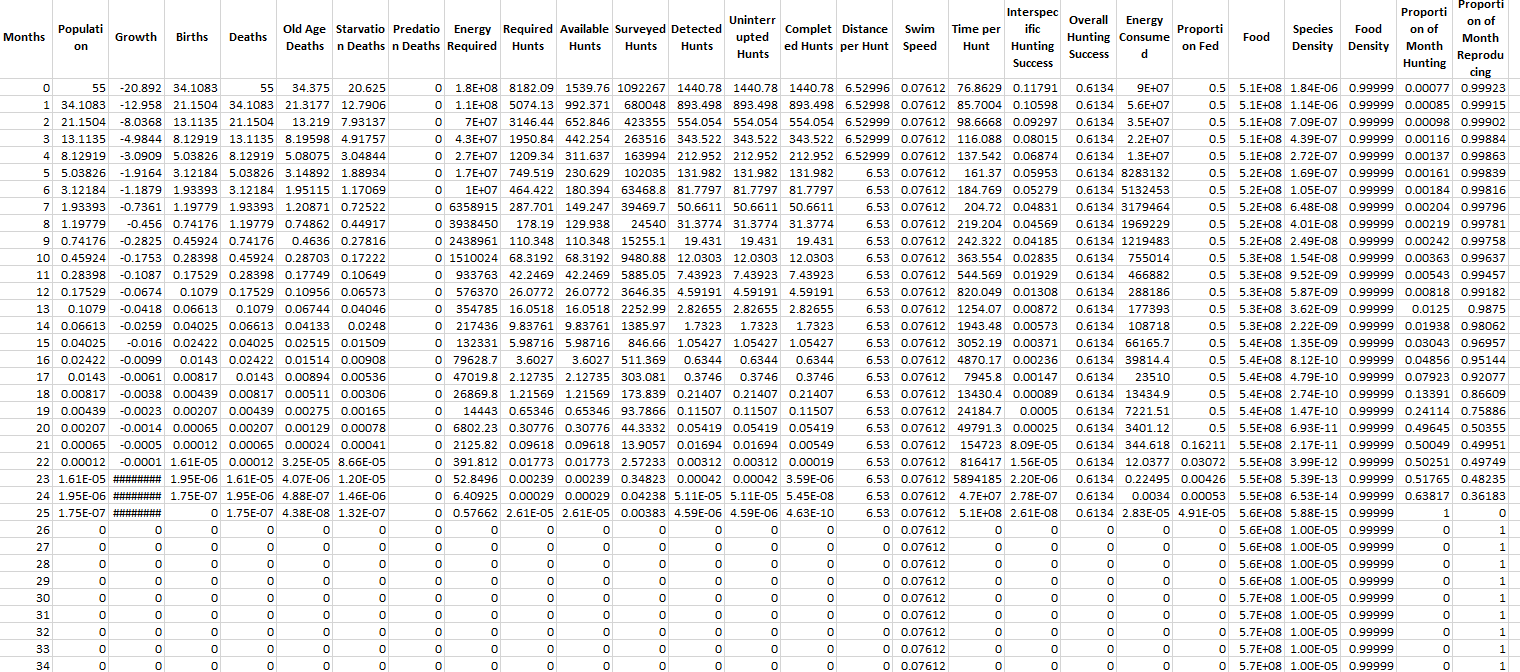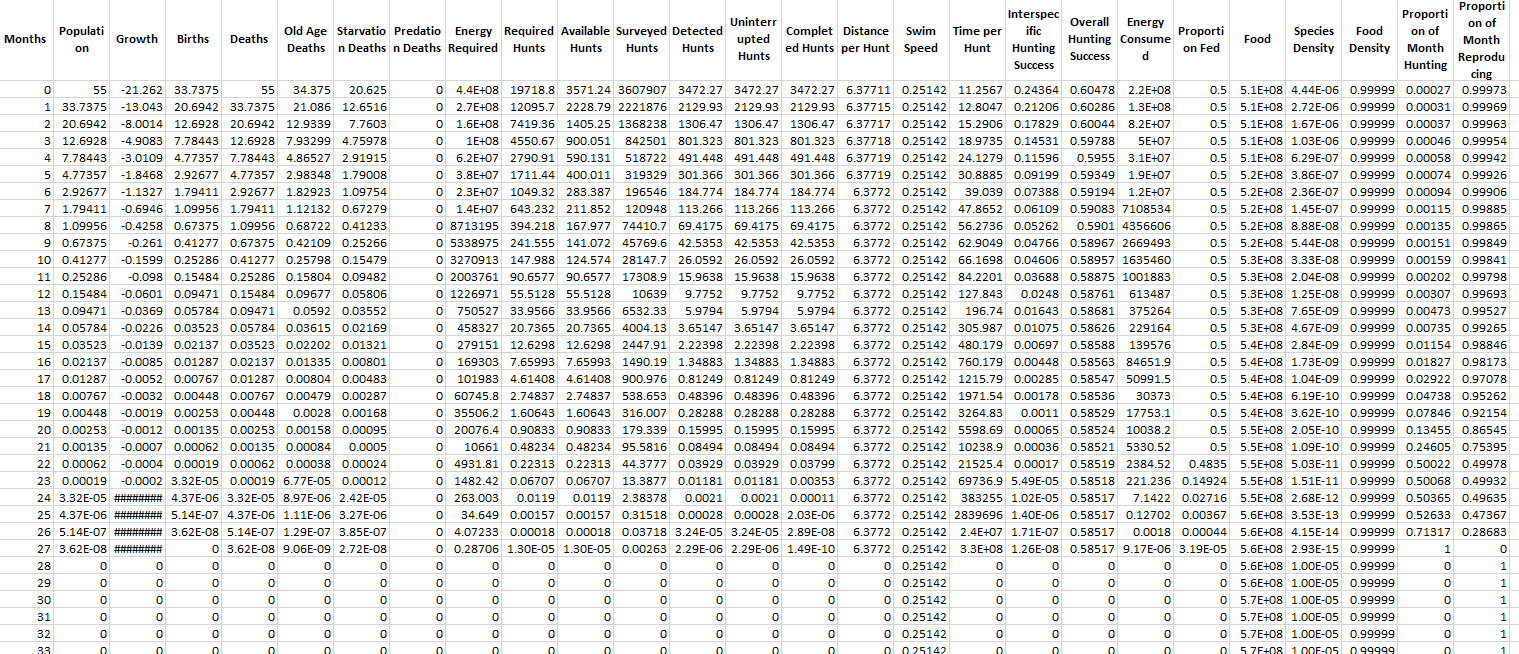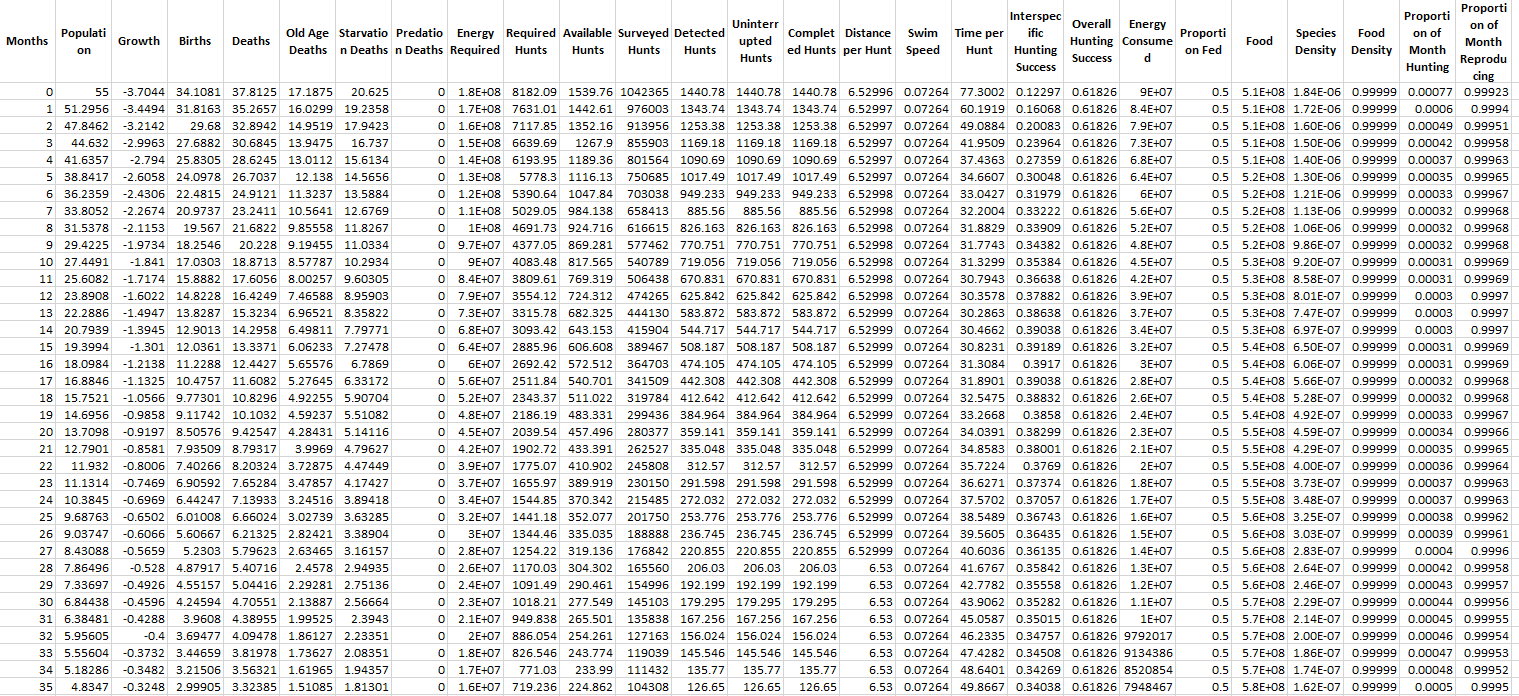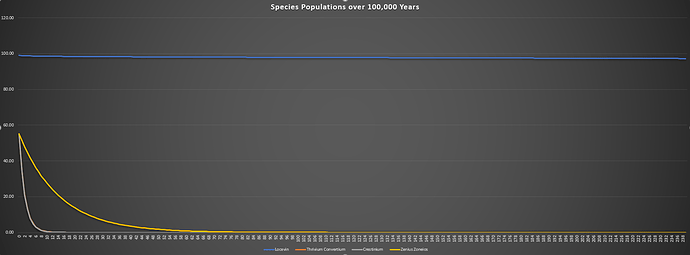@TeaKing Thank you for pointing that out. Just so you guys know I definitely haven’t forgotten about this if I haven’t posted in a few days, just been very busy and waiting for some free time to sit down and post the next bit of material. As I post the rounds I’ve been learning new things and applying those to improve the algorithm. I’ll give a summary of these changes soon, since it’s greatly helped for the algorithm’s design.
@J1Sun Yes, I added you to the waitlist!
@zenzonegaming @Evolution4Weak @blackjacksike I added you all back to the waitlist!
Round 2 (Part 2)
Here are the performance stats for the first 3 years of the simulation for each species. It’s pretty clear that pretty quickly, even though Locevin was disadvantaged in hunting glucose, the inability of the three predator species to detect Locevin led to their starvation and thus extinction.
Interestingly, over the 100,000 years, Zenius Zoneios lasted the longest before going extinct. It could be the evolution to increase lifespan, since an increase of one month at this point is effectively doubling their lifespans and halving old age death rates.
Feel free to change your mutation point spending based on this info. Otherwise, if you’re all happy with how you’ve spent it, I can post the next round!
